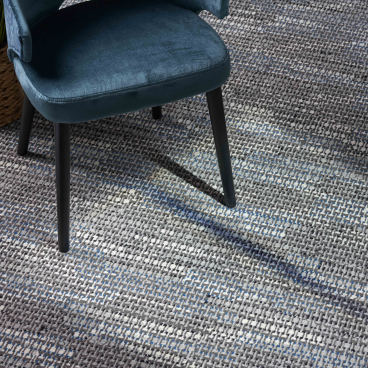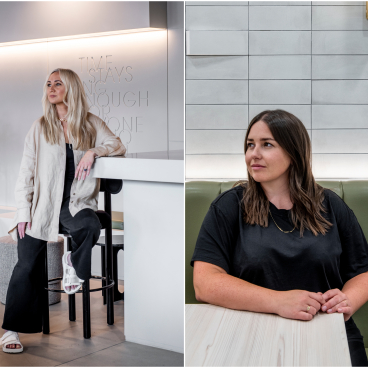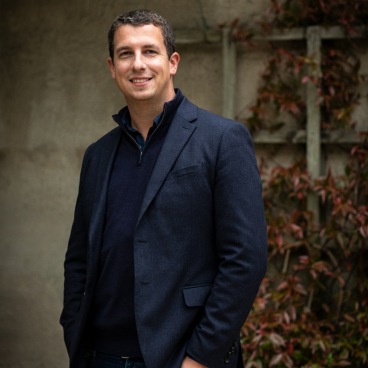Graduate spotlight: Potter and object maker, Bruno Schooling.
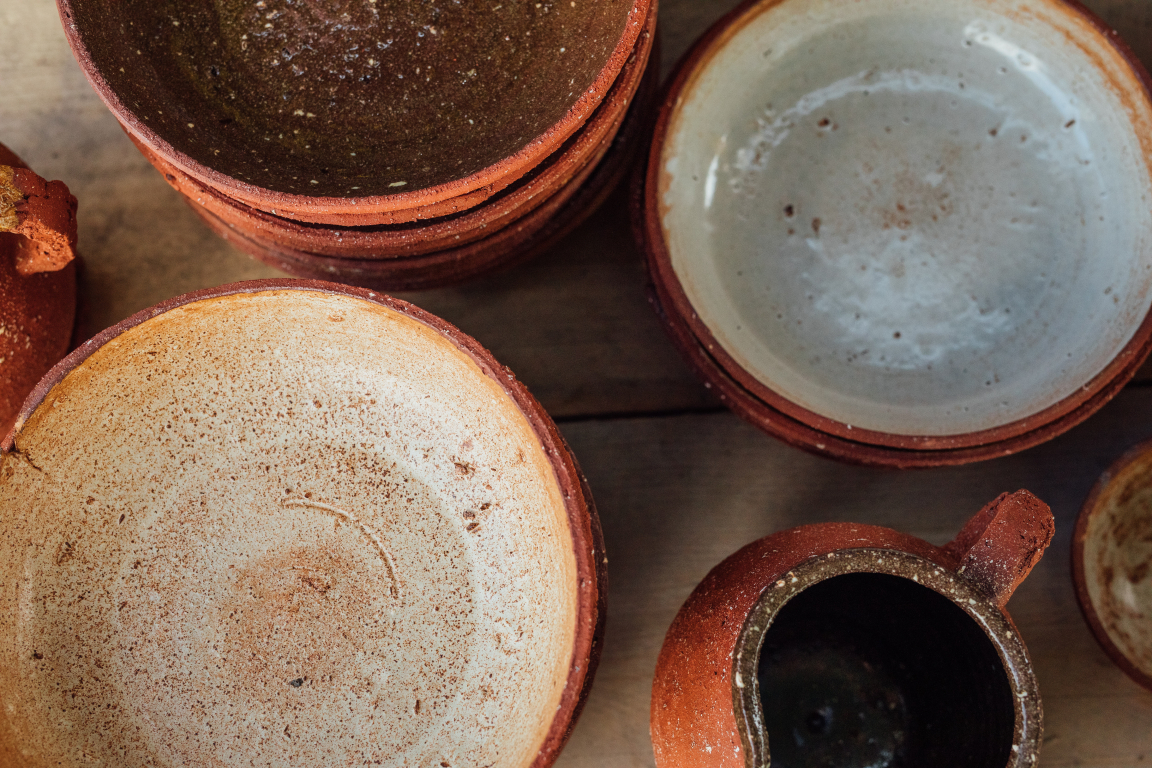
Following two years of digital degree shows and several years of making from the confines of bedrooms rather than university workshops and studios, this year’s graduates designed through adversity and triumphed.
The 2022 cohort displayed innovative ideas and outcomes based around sustainability, materiality and locality across all disciplines, namely interior design, bio-design, textiles and craft.
This four-part series details the work of four graduates that position place-based making at the core of their practice, championing the use of natural, circular materials in a variety of scenarios.
First up is Bruno Schooling, a product design and craft graduate from Manchester School of Art.
Bruno Schooling is a multi-disciplinary object maker with a narrative and process driven approach to his practice. His graduate project, Ground, utilises local materials and by products to produce a series of ceramic objects that mark the materiality of the surrounding landscape.
A continual collaboration with Keepers Cottage Organics, (a just over 20 acre farm nestled in the heart of the Peak District National Park), Schooling crafts a body of work filled with iron-rich terracottas and speckled crushed bone. The earthy, irregularity of the pieces is defined by the landscape, spurring a return to place defining materials. Ground responds to the primitive and fundamental connection between craft, cooking and place, and champions the use of site-specific materials and the ethos of nose-to-tail cooking.
Blown away by Bruno’s work at the Manchester School of Art degree show, we took the time to ask him a few questions about his project.
Can you please explain the inspiration behind your project Ground?
“My practice based research project, Ground, is an ongoing collaboration with Keepers Cottage Organics to source bone from outdoor reared, organic animals as well as wild, foraged clay from the land they graze on. Inspired by the intrinsic connection between craft, cooking and place, I have been exploring how I can use these site-specific materials that characterise the landscape to reconceptualise traditional craft processes."
I’m interested in how my practice as a maker can reference traditional craft and re-imagine them through my lo-fi approach to materials and making
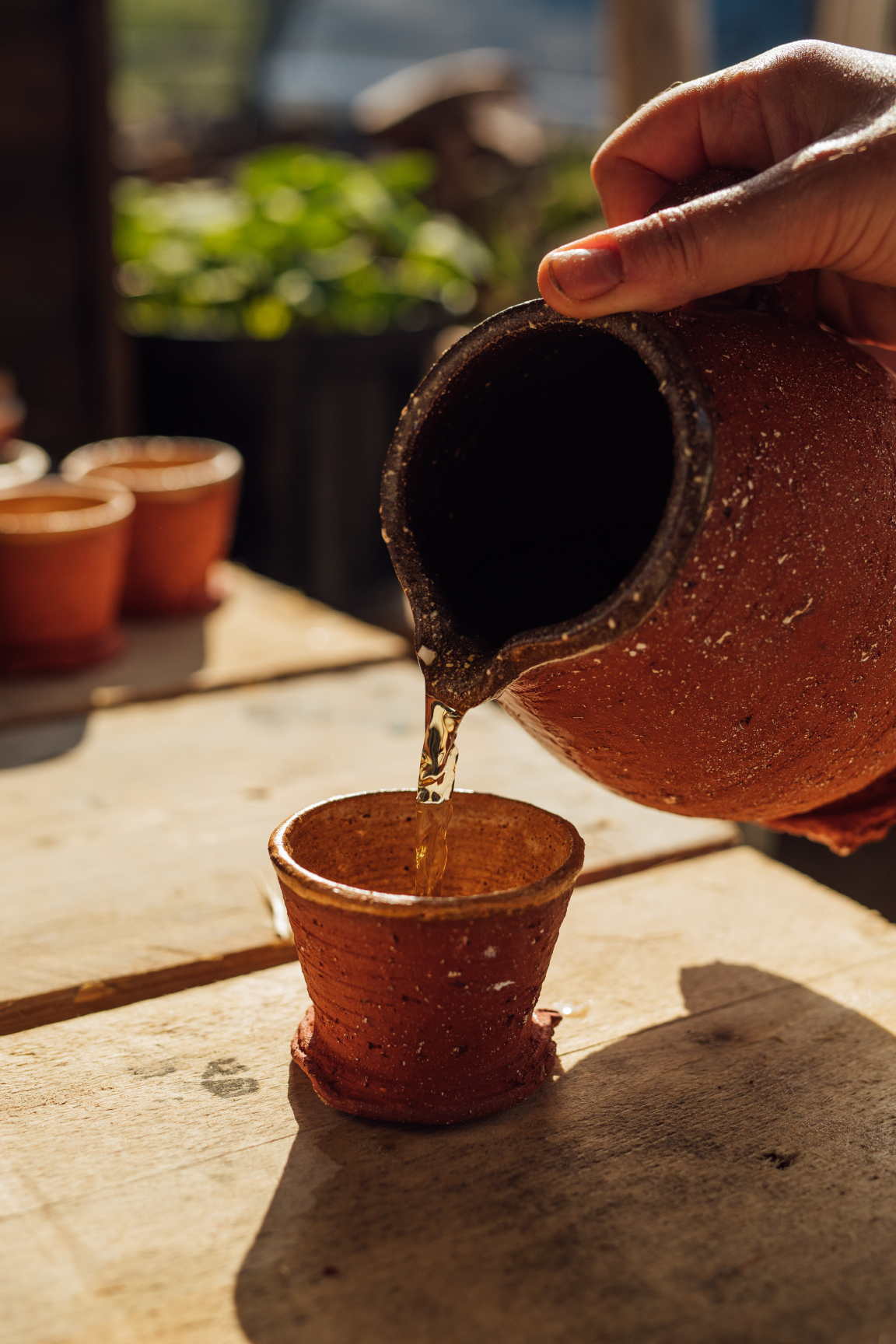
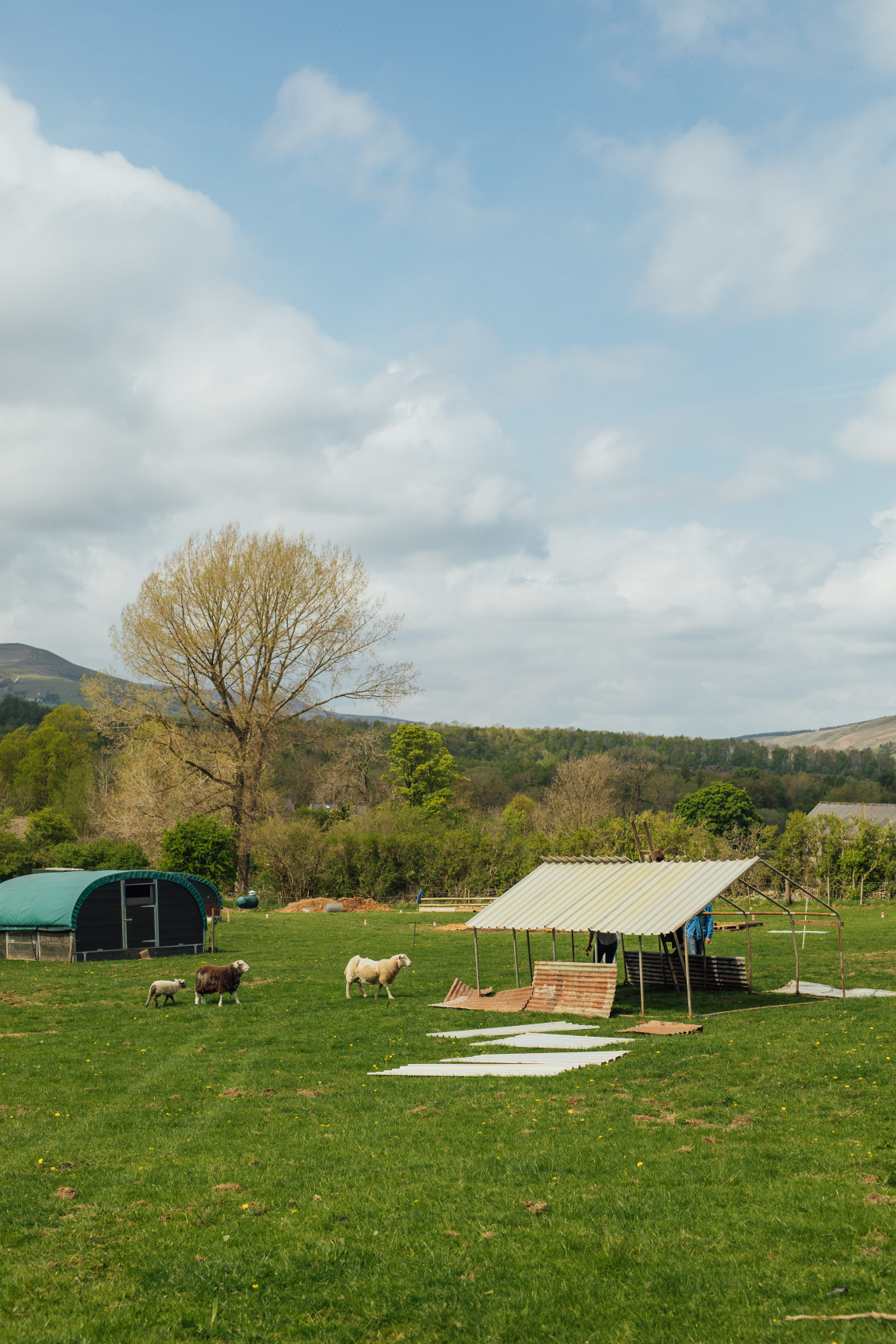
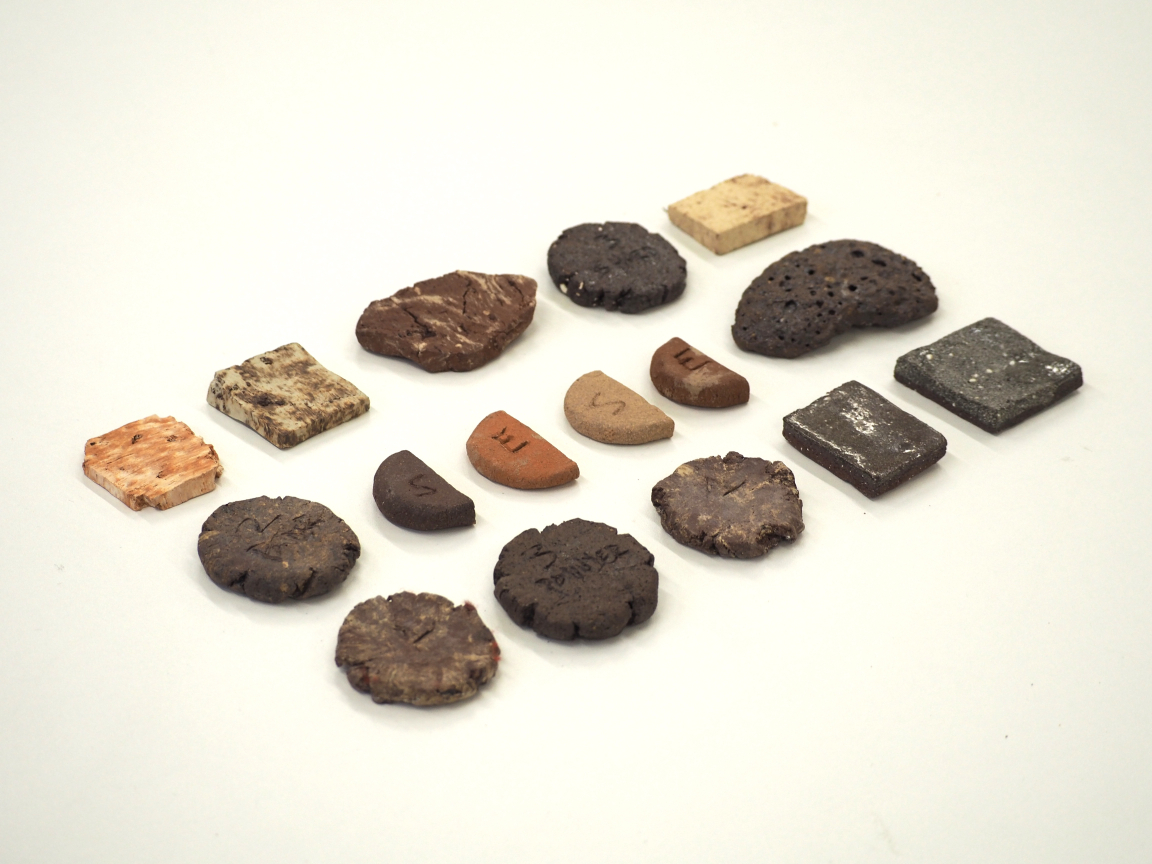
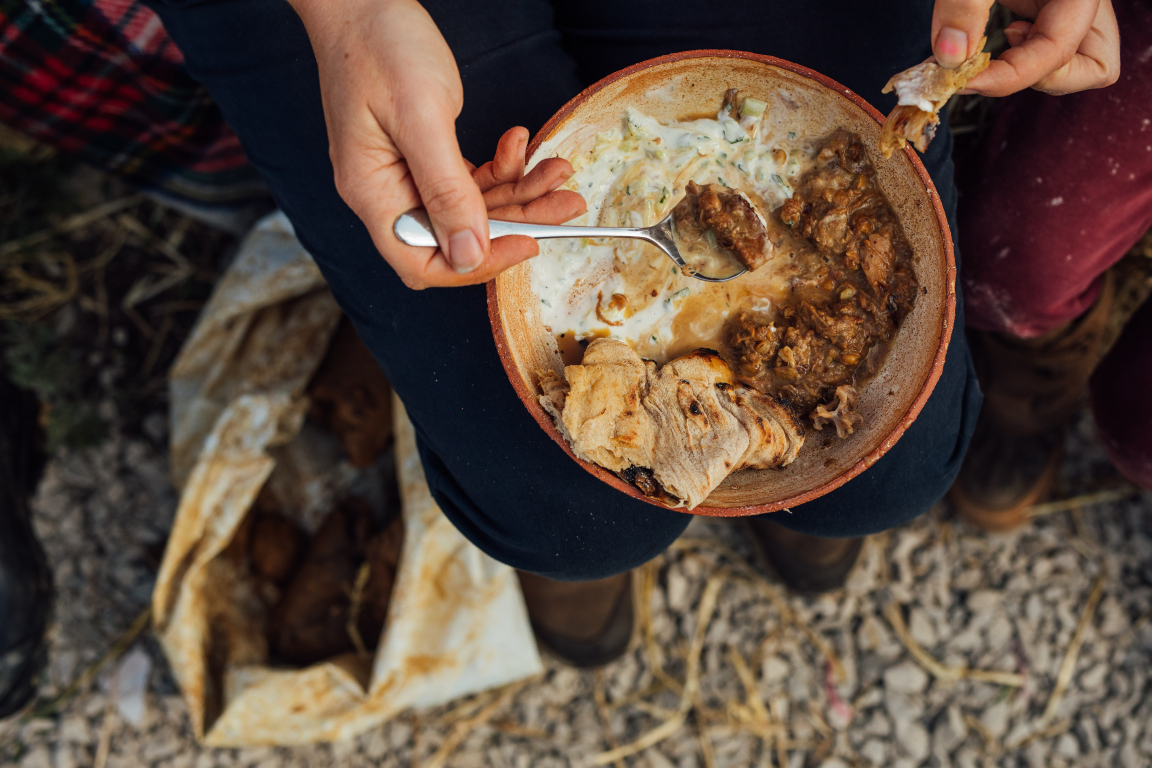
How did you become fascinated with narrative driven, slow making processes?
“During the first year of my degree, I undertook a fantastic collaborative project with Stockport based restaurant, Where the Light Gets In. The brief was to investigate the restaurant’s waste stream and consider how their circular approach to cooking and running a business could be reflected in objects or making.
“This was a critical point for the development of my interest into narrative based, circular design”.
Where and why is the part of countryside where you developed Ground so important to the work?
“Keepers Cottage Organics is 23 acres of secluded upland grazing, meadow fields and wood land just outside of Bradwell in the Peak District National Park.
“By collecting and processing all my own materials from the farm, the final form, texture and colour will inherently reference their provenance. As I work with the material in an unrefined state, the clay body contains rocks and, lumps and other natural impurities. Technically, these inclusions are unco-operative and awkward, however, working this way provides me with a much greater inspiration and satisfaction of both process and outcome”.
Region or place naturally defines and differentiates both the available materials and ingredients along with their characteristics
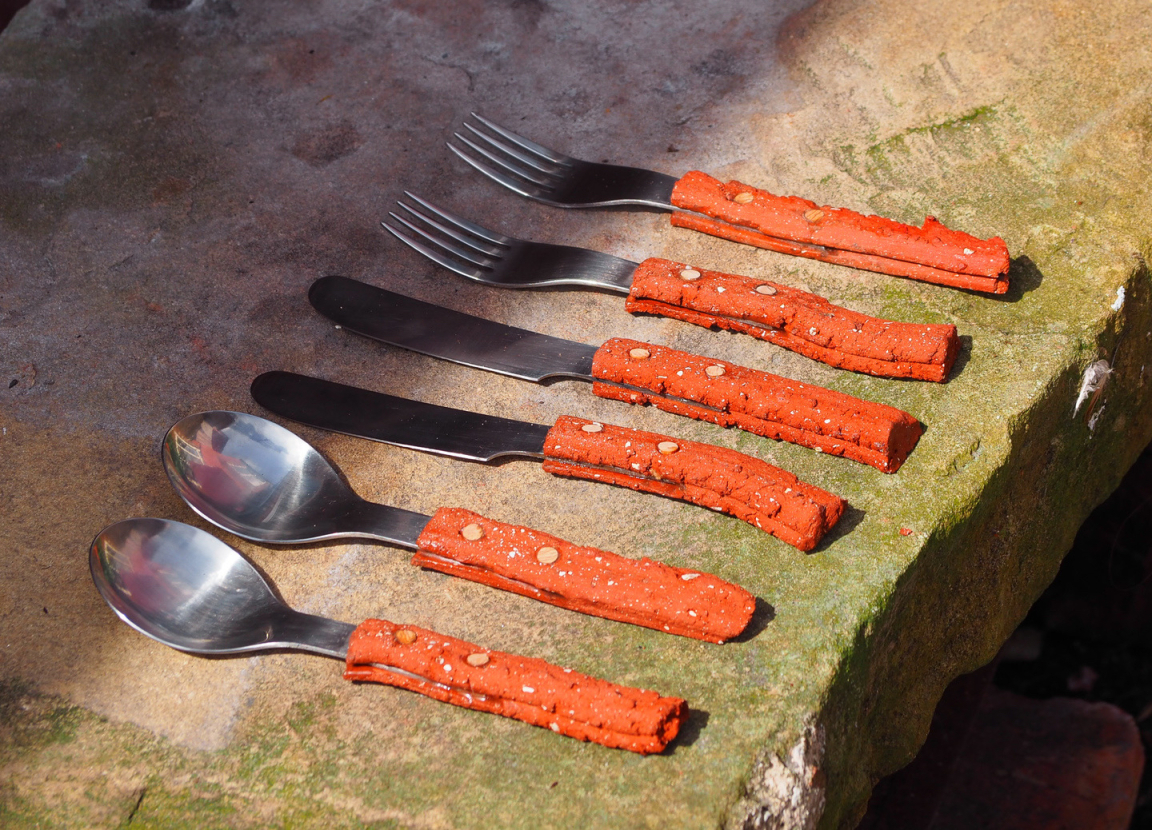
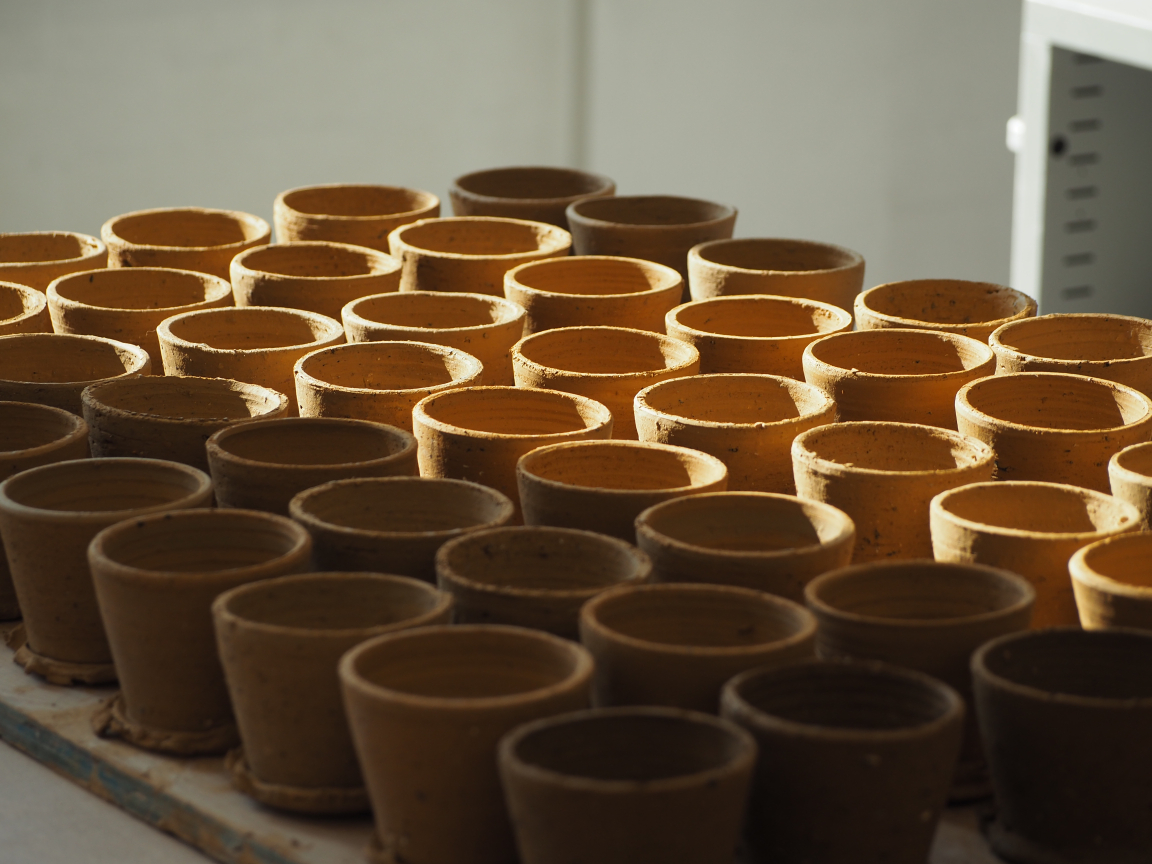
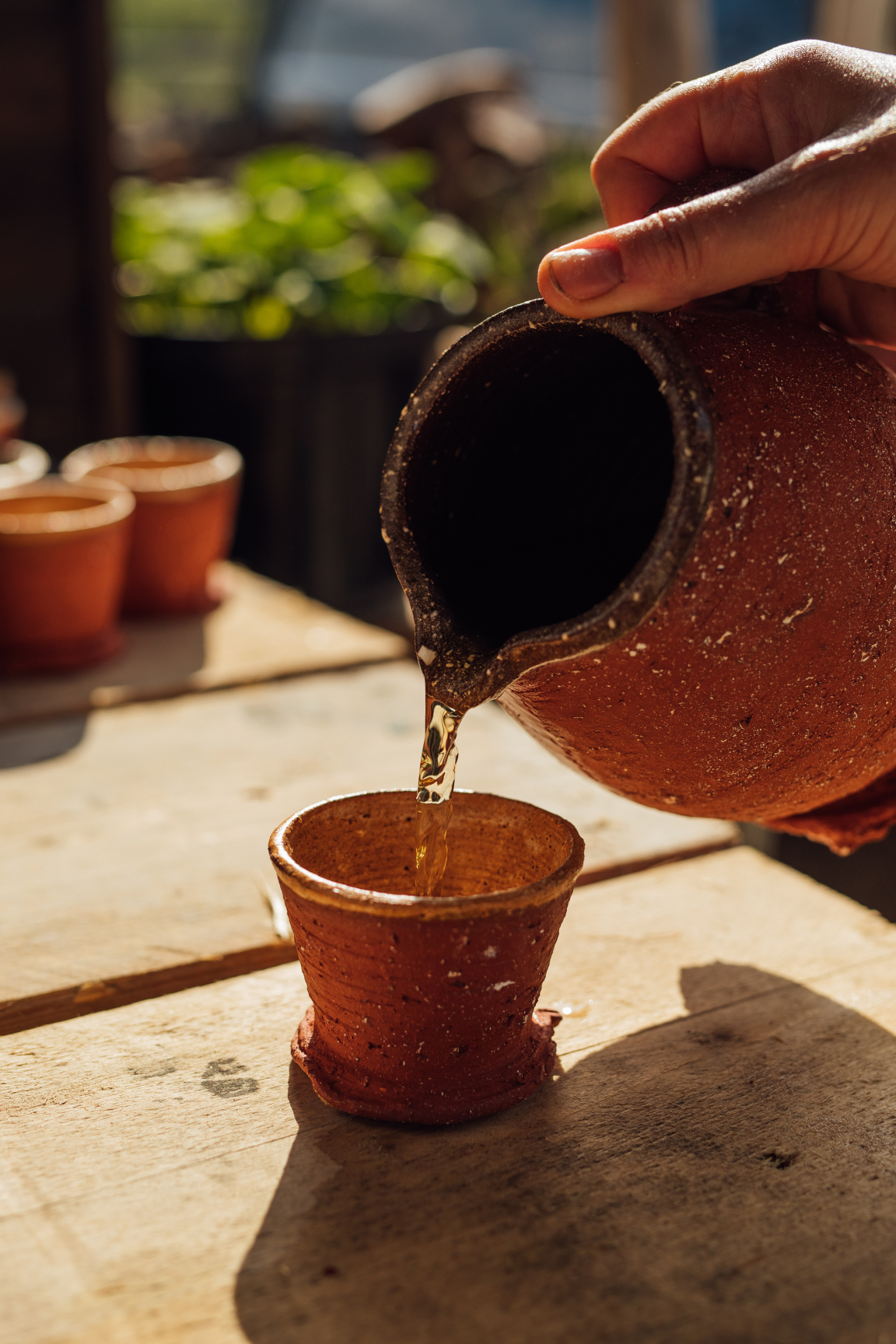
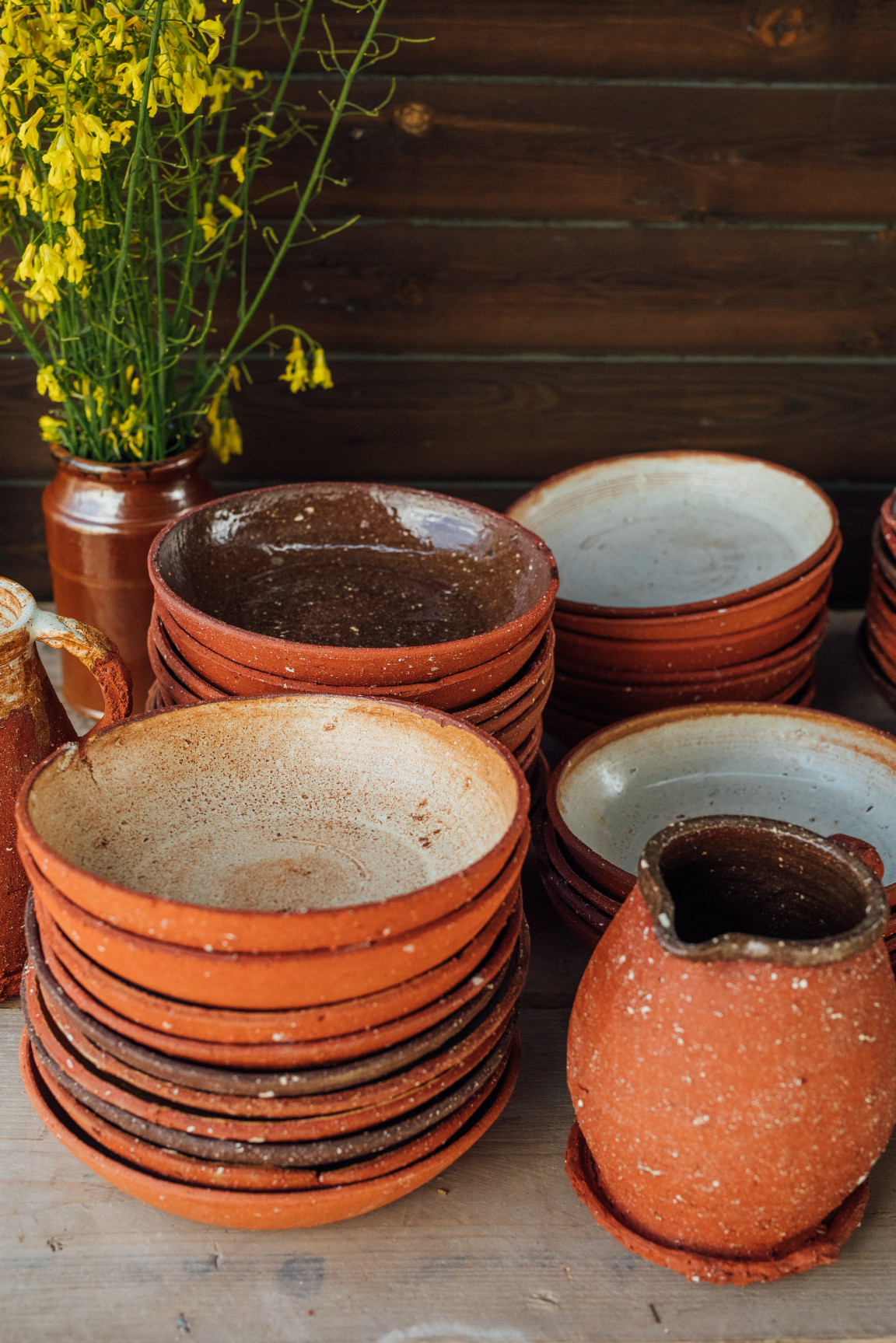
Can you explain how you feel cooking and craft processes are intrinsically linked?
“My main area of research has been surrounding how site responsivity and locality can create a cohesive and thought-provoking relationship between the two practices. I believe that a region or place naturally defines and differentiates both the available materials and ingredients along with their characteristics. Thus meaning, if you are working with local produce, from clay to vegetables, its provenance can, and should, have a fundamental and inherent effect on the outcome”.
Why is the cross collaboration between farmers, butchers and chefs so important to your practice?
“This generous collaboration of practices has been crucial to my project, without the insight and innovation of chefs and the abundant availability of materials from the farm this project would not have been possible”.
Circularity is almost naturally embedded
Does circularity to you mean small scale and local?
“In many ways, yes. By working with local producers or farmers and responsibly sourcing materials from their land then circularity is almost naturally embedded.
However, I’m intrigued by the material abundance and opportunities that farms across the country could provide, and how a project like this could be upscaled to create a network of collaborators and makers whilst still ensuring circularity is at its heart”.
To find out more about Bruno’s work visit: @br____uno / brunoschoolingmaker.myportfolio.com.
All images used courtesy of Bruno Schooling



